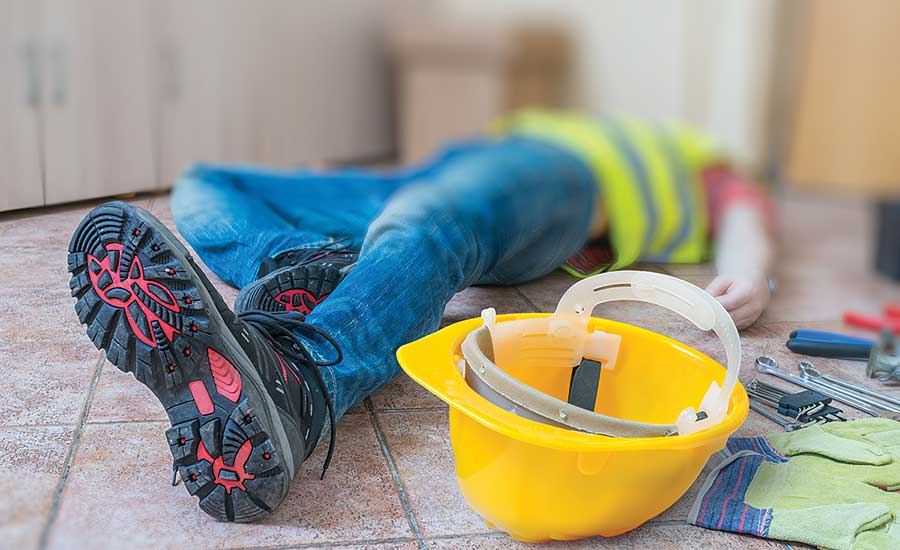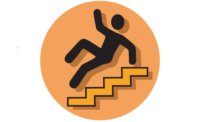History
The Walking-Working Surfaces; Personal Protective Equipment (Fall Protection Systems) standard, 29 CFR 1910.22, was published in the Federal Register on November 18, 2016 at pages 82494-83006 (513 pages). Most of the rule becomes effective Jan. 18, 2017 but some provisions have delayed effective dates.
Why this standard is important
Falls from heights and on the same level (a working surface) are among the leading causes of serious work-related injuries and deaths. OSHA estimates that 202,066 serious (lost-workday) injuries and 345 fatalities occur annually among workers directly affected by the final standard.
Hazards
Falls and falling objects can result from unstable working surfaces, ladders that are not safely positioned, and misuse of fall protection. Workers are also subject to falls or to the dangers of falling objects if sides and edges, floor holes, and wall openings are not protected.
Enforcement Statistics
Because the standard is so new, enforcement statistics are not yet available for it. An indication of the importance OSHA assigns to fall prevention can be seen in its list of most-cited standards of 2016, on which its fall protection standard for construction, 1926.501, ranked #1.
Provisions likely to be cited
- All places of employment, passageways, storerooms, and service rooms shall be kept clean, orderly and in a sanitary condition.
- The floor of every workroom shall be maintained in a clean and, so far as possible, a dry condition.
- Aisles and passageways shall be kept clear and in good repair.
- Covers and/or guardrails shall be provided to protect personnel from the hazards of open pits, tanks, vats, ditches, etc.
Industries that may be cited
The final rule covers a wide variety of general industry firms including building management services, utilities, warehousing, retail, window cleaning, chimney sweeping and outdoor advertising. It does not change construction or agricultural standards.
What must employers do to protect employees?
- Employers must protect workers from fall hazards along unprotected sides or edges that are at least 4 feet above a lower level.
- They must provide fall protection in specific situations, such as hoist areas, runways, areas above dangerous equipment, wall openings, repair pits, stairways, scaffolds, and slaughtering platforms.
- Rope Descent Systems now have a 300-foot height limit and must be certified as capable of supporting 5,000 pounds for each worker attached.
- Employers must ensure workers in high hazard situations are trained on fall hazards and fall protection systems.
Key Letter of Interpretation
The open sides of platforms more than four feet above an adjacent floor or ground level must be guarded by a standard railing or the equivalent. If the top of a tank is not a "platform" under the analysis called for in OSHA's guidance document, the guardrail requirements of that standard would not apply. However, if perimeter guarding is not provided, fall protection in the form of personal protective equipment would likely be required.
Significant Enforcement Cases
KANSAS CITY, Mo. – After a construction worker plunged 40 feet to his death through a roof opening at a worksite, OSHA cited Kirberg Roofing Inc. of Kansas City, Kan. for failing to provide workers with fall protection and train them about fall hazards. Davila Sheet Metal Co. Inc. was cited for failing to protect workers from fall hazards and determine the strength and structural integrity of the walking/working surface employees were using.
PARAMUS, N.J. – A general contractor and four subcontractors wracked up 21 violations and a total of $182,380 in penalties at an under-construction car dealership. Cited were: Infante Associates Inc.; La Conti Concrete & Masonry Inc.; Paino Roofing Co. Inc.; V.A. Spatz & Sons and C. Mancini Construction Drywall & Acoustical Inc. Employees were exposed to fall hazards in excess of 16 feet from a walking/working surface, 27 feet from a scaffold working level and 36 feet while performing roofing work.
Compliance Assistance
Through its On-site Consultation Program, OSHA provides individualized, confidential assistance to small businesses at no cost. This service is separate and independent from OSHA enforcement programs.
OSHA’s Preventing Falls Fact Sheet discusses fall protection which may be used to reduce hazards associated with unprotected sides, wall openings, and floor holes and best practices for ladder safety.



